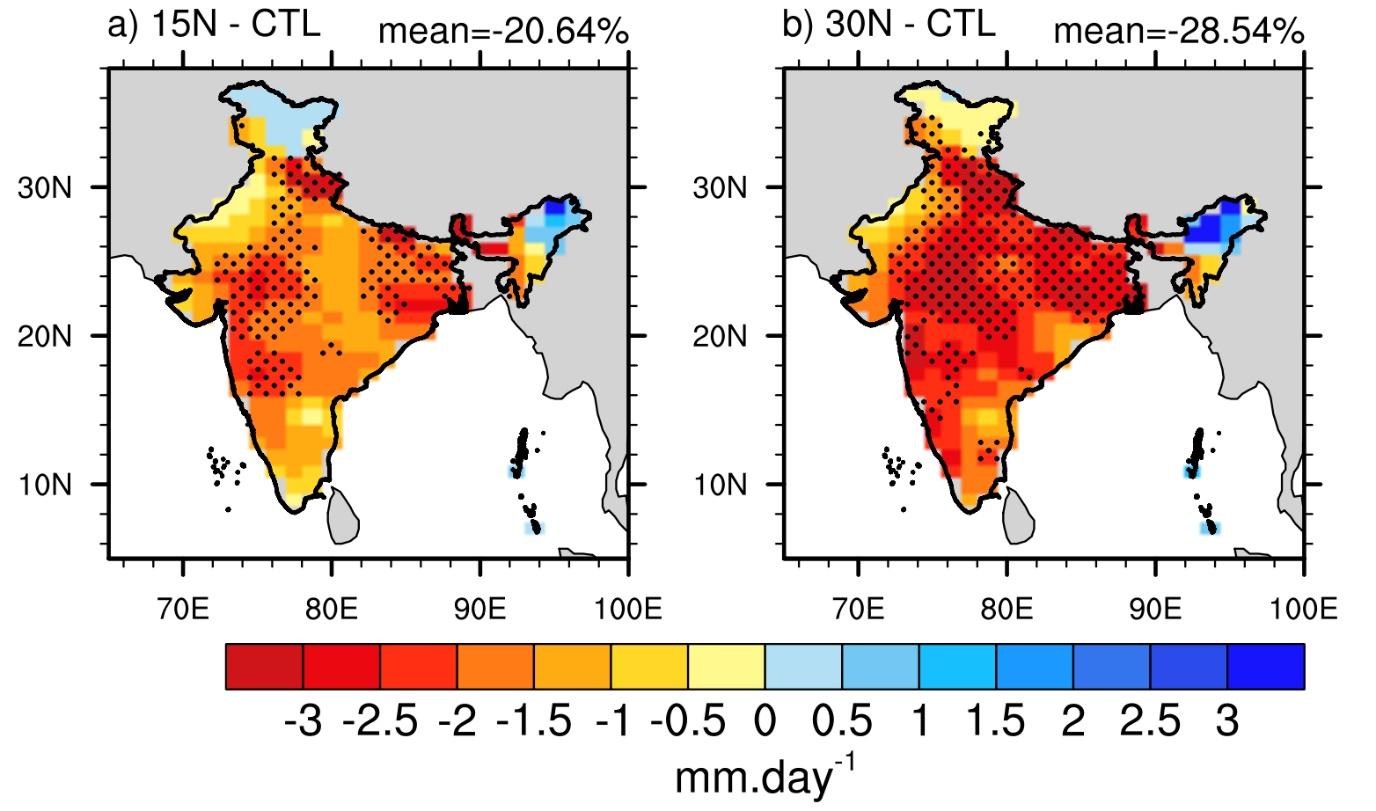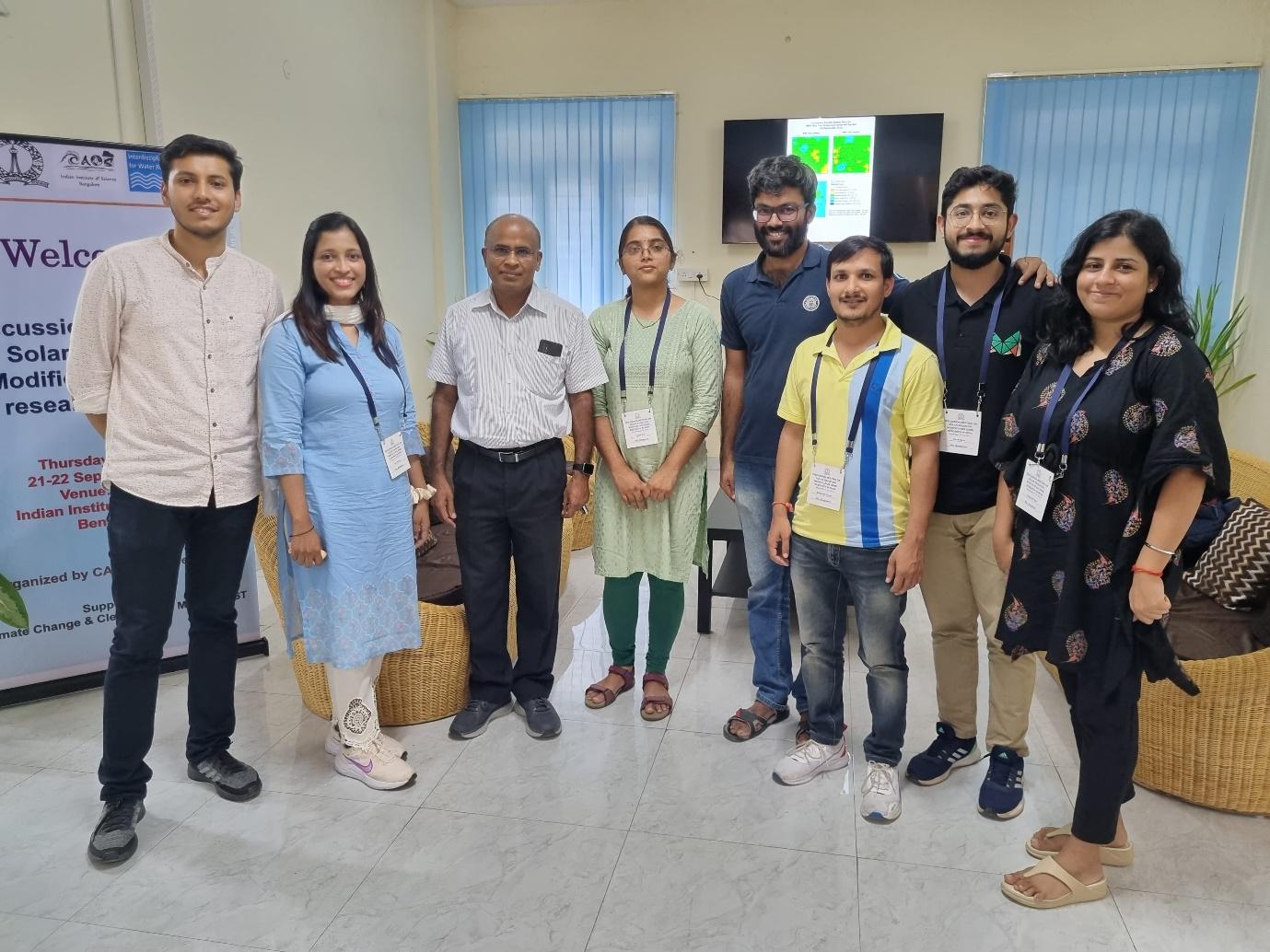IISc research helps to set the aerosol planetary boundary

Linking monsoon rainfall to reflective aerosols image credit: K S Krishnamohan
Human pressure on the planet is immense today. A September 2023 paper published in Science Advances finds that six out of nine processes critical for maintaining the stability and resilience of Earth systems are well outside the safe operating space for humanity. One of these nine key processes is the interaction between anthropogenic aerosols and climate. The interaction is so complex that previous assessments on planetary boundaries in 2009 and 2015 did not determine the threshold value of the anthropogenic aerosol amount that could cause major disruptions on a planetary scale.
Govindasamy Bala, Professor at the Centre for Atmospheric and Oceanic Sciences (CAOS), IISc, and an Earth Commissioner, is one of the co-authors in the latest update to planetary boundaries. His group’s climate modelling work on how stratospheric aerosol geoengineering could impact the tropical monsoon systems provided the key clue to set the planetary boundary values for the anthropogenic aerosol loading.
Aerosols have both natural and anthropogenic sources, and they interact with climate in multiple ways. For example, aerosols provide the condensation nuclei for cloud formation. Aerosols such as black carbon absorb radiation and warm the climate, while reflecting aerosols such as sulphates scatter radiation back into space and cause cooling. Interestingly, both absorbing and reflecting aerosols reduce rainfall: absorbing aerosols by stabilising the atmosphere while reflecting aerosols by cooling the climate system. Aerosol optical depth (AOD) is a measure for the aerosol amount – it quantifies the extinction of light by aerosols.
In addition to their effect on regional temperatures and rainfall, climate modelling research from Bala’s lab in stratospheric aerosol geoengineering showed, in two research papers published in 2022 and 2023, that the interhemispheric difference in AOD could disrupt the monsoon rainfall in tropical regions by altering the planetary energetics and shifting the latitudinal position of the tropical rainbands. For instance, the 2022 paper in Climate Dynamics showed that India could experience persistent droughts if sulphate aerosols are injected into the northern hemispheric stratosphere and the interhemispheric AOD difference increases by about 0.25 (Figure 1). The 2023 publication in the same journal showed that the mean northern hemispheric monsoon rainfall could reduce by 7% when interhemispheric AOD difference increases by 0.1.
These quantifications of the relationship between interhemispheric AOD difference and tropical monsoon rainfall by Bala’s group helped to set the aerosol planetary boundary in the latest update to the planetary boundaries in Science Advances – a value of 0.1 for the interhemispheric difference in AOD with the zone of increasing risks from 0.1 to 0.25 has been assigned. Similar values were also set for the safe global aerosol Earth System Boundary (ESM) in an earlier paper in Nature this year which was also co-authored by Bala.

image credit: K S Krishnamohan
In recent years, injection of reflective aerosols into the stratosphere has been suggested as an option to cool the planet. This option could have some severe risks if poorly planned. This figure illustrates how reflective aerosols injected only into the northern hemisphere stratosphere could reduce the Indian monsoon rainfall. The spatial pattern of June to September (JJAS) precipitation change over the Indian region when aerosols are injected at a)15oN and b) 30oN relative to the RCP8.5 future scenario with large greenhouse gas emissions (CTL; 2043–2049) is shown. The interhemispheric AOD difference in these simulations increased by about 0.25. Percentage changes in the mean over the region is shown in the top right of each panel. The stippling in the panels shows the regions where the changes are significant at the 5% significance level.

The present research group – Names from Left to right: Diljit Dutta (PhD student), Anu Xavier (postdoc), Govindasamy Bala (professor), Usha Hasyagar (postdoc), KU Jayakrishnan (PhD student), Mahendra Singh (PhD student), Kartik Soni (MTech student), and Harpreet Kaur (PhD student).
REFERENCES:
Richardson et al., Earth beyond six of nine Planetary boundaries, Science Advances (2023)
https://www.science.org/doi/10.1126/sciadv.adh2458
Roose S, Bala G, Krishnamohan KS, Cao L, Caldeira K, Quantification of Tropical Monsoon Precipitation Changes in terms of Interhemispheric Differences in Stratospheric Sulfate Aerosol Optical Depth, Climate Dynamics (2023)
https://link.springer.com/article/10.1007/s00382-023-06799-3
Krishnamohan KS, Bala G, Sensitivity of tropical monsoon precipitation to the latitude of stratospheric aerosol injections, Climate Dynamics (2022)
https://doi.org/10.1007/s00382-021-06121-z
Rockstrom et al., Safe and Just Earth System Boundaries, Nature (2023)
https://doi.org/10.1038/s41586-023-06083-8
LAB WEBSITE:
https://caos.iisc.ac.in/gbala.html



